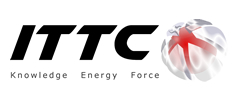Barriers In Promoting Good Standards Of Health And Safety

The employer must then provide information about precautionary measures against these hazards. People could be seen as one of the most important assets in an organisation. As human beings we are all entitled to a safe and healthy working environment.
If there are no instructions on the machine be sure to ask for help and ask for specific instructions from a supervisor or co-worker who has used the equipment before. Unfortunately, scaffolds are responsible for a large number of injuries every year. If you’re going to be working on a scaffold you’ll need to ensure your safety first. The first thing you’ll need to do is ask your supervisor when the last time the scaffold was inspected.
However, you do not need to take action if it would be grossly disproportionate to the level of risk. There are some hazards with a recognised risk of harm, for example working at height, working with chemicals, machinery, and asbestos.
Health and safety involves all level of the workforce, from the top to the what causes hair loss bottom. It is important to establish participation, communication and trust between the various role players in order to create a positive safety culture. All employees have the right to be trained – according to prescription the employer must provide the necessary information, instructions and training to employees.
The Options For Uncomplicated Solutions For Healthy Habits
Depending on the type of work you do, there may be other hazards that are relevant to your business. You are probably already taking steps to protect your employees, but your risk assessment will help you decide whether you have covered all you need to. This process is known as risk assessment and it is something you are required by law to carry out. If you have fewer than five employees you don’t have to write anything down. Please note that employee involvement is just as important as management involvement.
- This process is known as risk assessment and it is something you are required by law to carry out.
- Depending on the type of work you do, there may be other hazards that are relevant to your business.
- There are some hazards with a recognised risk of harm, for example working at height, working with chemicals, machinery, and asbestos.
- However, you do not need to take action if it would be grossly disproportionate to the level of risk.
For most people this does not need to be a big exercise – just note the main points down about the significant risks and what you concluded. Your risk assessment should only include what you could reasonably be expected to know – you are not expected to anticipate unforeseeable risks. This means balancing the level of risk against the measures needed to control the real risk in terms of money, time or trouble.
Clarifying Fast Secrets Of Health News
All workers should be familiar with emergency routes and with where all fire extinguishers are. When working with this type of equipment it’s important to be extra cautious and make sure there’s no significant wear and tear in the machine. You should also make sure that you follow the safety precautions posted on the equipment.
Never work on a scaffold that hasn’t been inspected or that doesn’t have a strong base or platform. Remember, the greater the hazard the more robust and reliable the measures to control the risk of an injury occurring need to be. We have also developed online risk assessment tools, to help employers complete and print off their own records. Any paperwork you produce should help you to communicate and manage the risks in your business.
Introducing No-Hassle Health Life Advice
Legislation in the form of the Occupational Health and Safety Act was written and passed by parliament to address this matter. The main objective of the OHS Act could be described as proactive attempt by government to provide and maintain a safe and healthy work environment to all. Preventing unnecessary injury, illness and loss makes good management sense any way. Ionising radiation risks may arise from exposure to x-rays or radionuclides e.g. medical imaging, as well as from radon gas from the ground.
